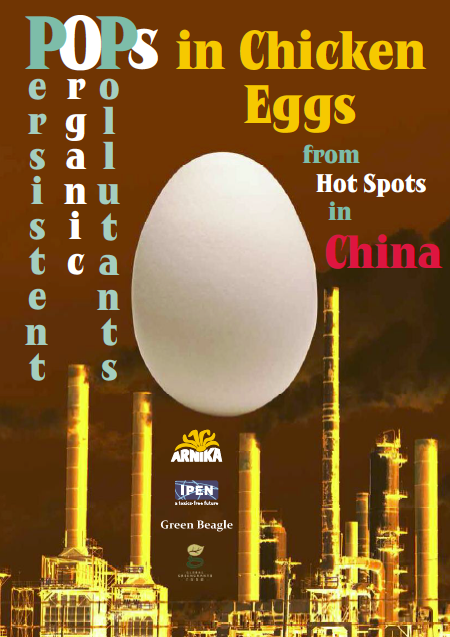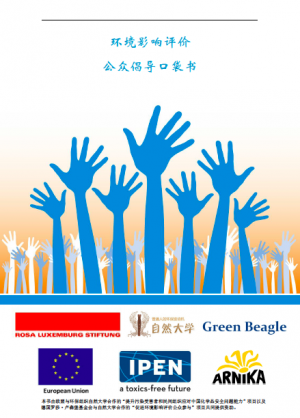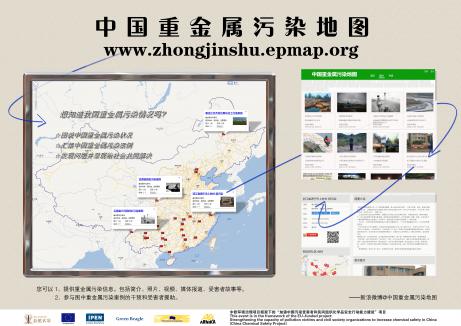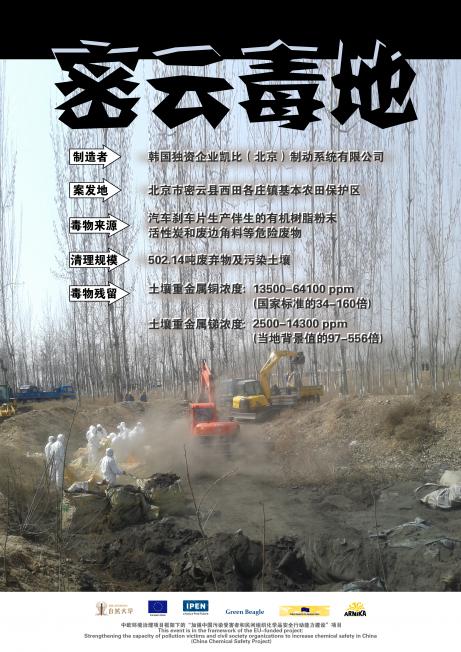Resources
POPs in Chicken Eggs from Hotspots in China
Eggs have been found to be sensitive indicators of persistent organic pollutant (POP) contamination in soils or dust and are an important exposure pathway from soil pollution to humans, and eggs from contaminated areas can readily lead to exposures with exceeding thresholds for the protection of human health (Van Eijkeren, Zeilmaker et al. 2006, Hoogenboom, ten Dam et al. 2014, Piskorska-Pliszczynska, Mikolajczyk et al. 2014). Chickens and eggs might therefore be ideal “active samplers” and indicator species for evaluation of the level of contamination of sampled areas by POPs, particularly by dioxins (PCDD/Fs) and PCBs. Based on this assumption, we have chosen sampling of free range chicken eggs and their analyses for selected POPs as one of the monitoring tools within the project ‘‘Strengthening the capacity of pollution victims and civil society organizations to increase chemical safety in China’‘.
The data and analyses of free range chicken eggs discussed in this report were obtained during a 2 1/4 year-long joint project of three NGOs: IPEN (Sweden), Green Beagle (China) and Arnika – Toxics and Waste Programme (Czech Republic). They were obtained from local people and/or sampled by Chinese NGOs Nature University and Green Beagle during field visits in 2013 and 2014 from seven different localities in China.

Action Manual for Public Participation in Environmental Impact Assessment (EIA) / 环境影响评价公众倡导口袋书
Environmental NGOs Green Beagle, Nature University, IPEN and Arnika released the Action Manual for Public Participation in EIA to help the public participate in the EIA process in an effective and rational basis. “Facing China’s already severe environmental situation, we lack not only techniques but more importantly certain organizations’ sense of responsibility for their jobs and society as well as the public’s courage to take action,” explains Xiao Xiong, the main book editor. “This Action Manual provides ‘how to’ advice for community residents so that Chinese law can be fully implemented.”
This poster shows how an on-line map can provide the public with information about toxic metals pollution at case study sites. The Dexing metals pollution case in Jiangxi Province is shown as an example (please see the report here).
Vegetables come in boxes and the “vegetable capital” of China is located in Shouguang, Shandong Province. Unfortunately, Shouguang is severely polluted – but consumers do not see that on the label (please see the report here).
Toxic waste dumping on farmland often occurs quietly and when it is discovered, there is usually no access to information about the possible harm or the responsible party. This poster breaks the silence and uses the Miyun case study to provide details about who is responsible, what was dumped, where it happened, and why the “cleanup” was not effective (please see the report here).
The notes under the pins ask four key questions about incineration. 1) Are the emissions completely controllable? 2) Is the waste all gone after burning? 3) Can the public get information about the construction and operation of incineration plants? 4) Is incineration healthy for human beings and animals? For answers to these questions, please see the Likeng report here.
These are the determined faces of farmers challenging a subsidiary of China’s largest chemical company when it falsifies public participation, dumps waste, pollutes water, and damages crops. The poster invites the viewer to get involved. For more information, please see the Qihua report here.
Debug project variant
Debug project variant










